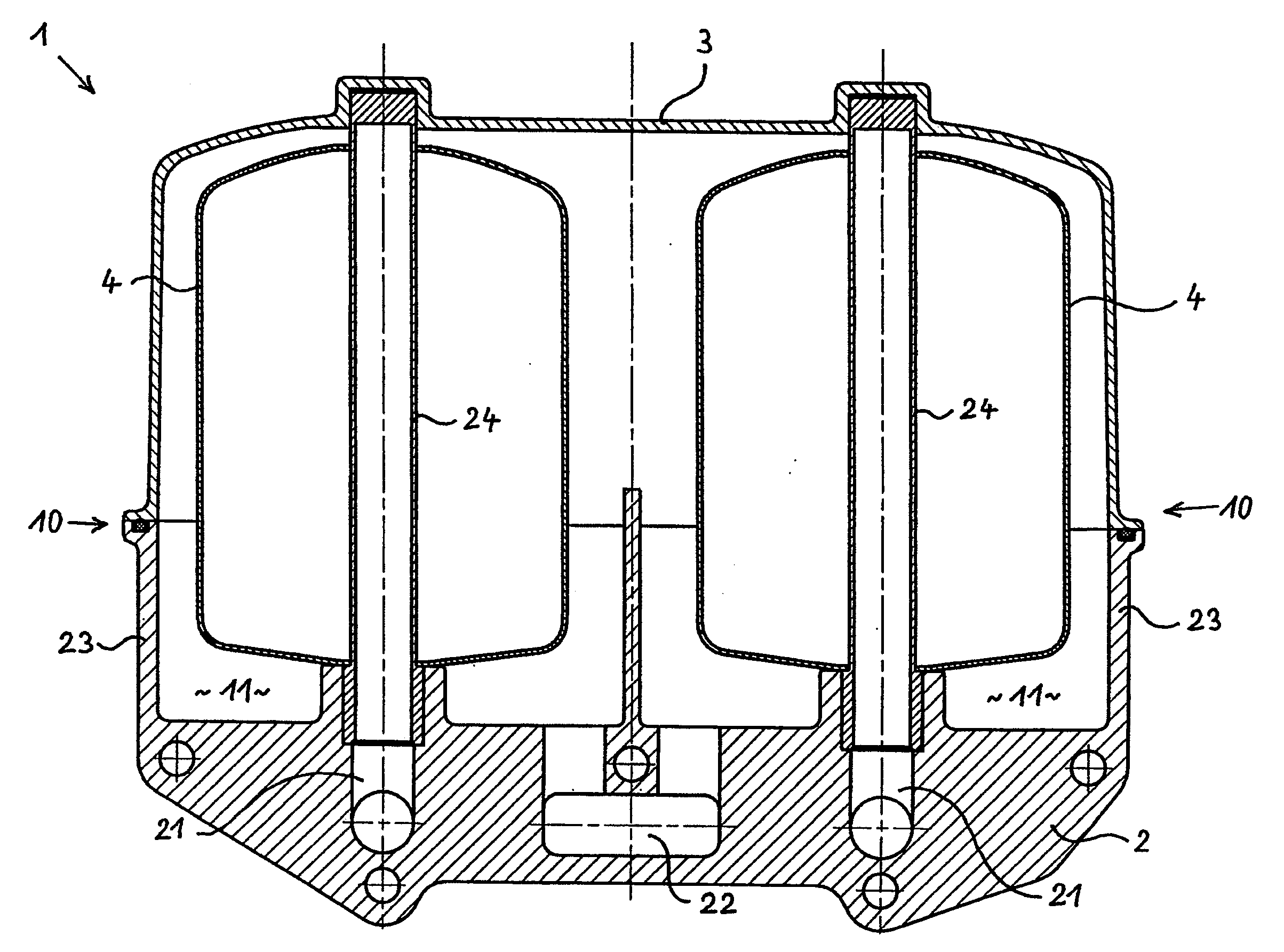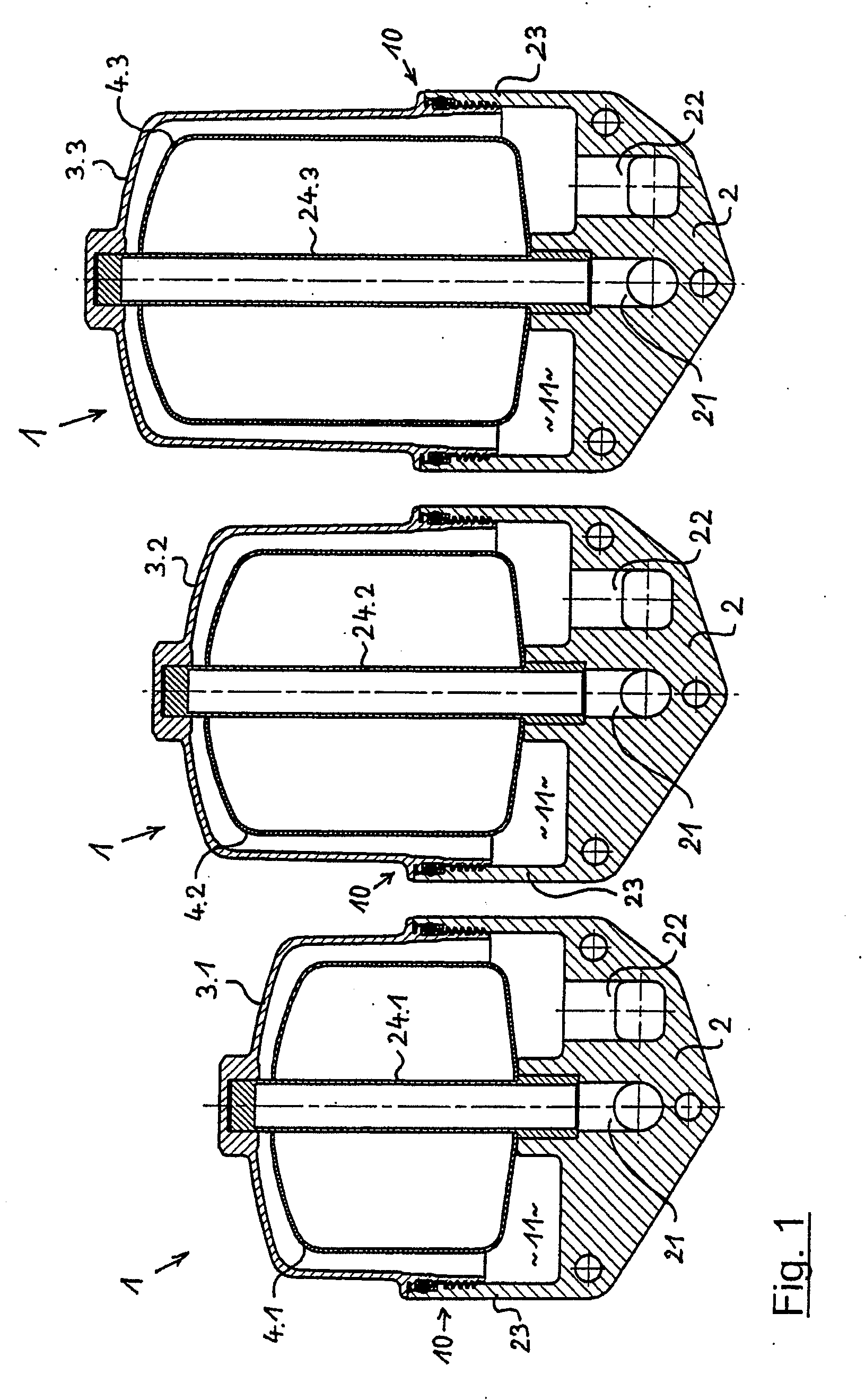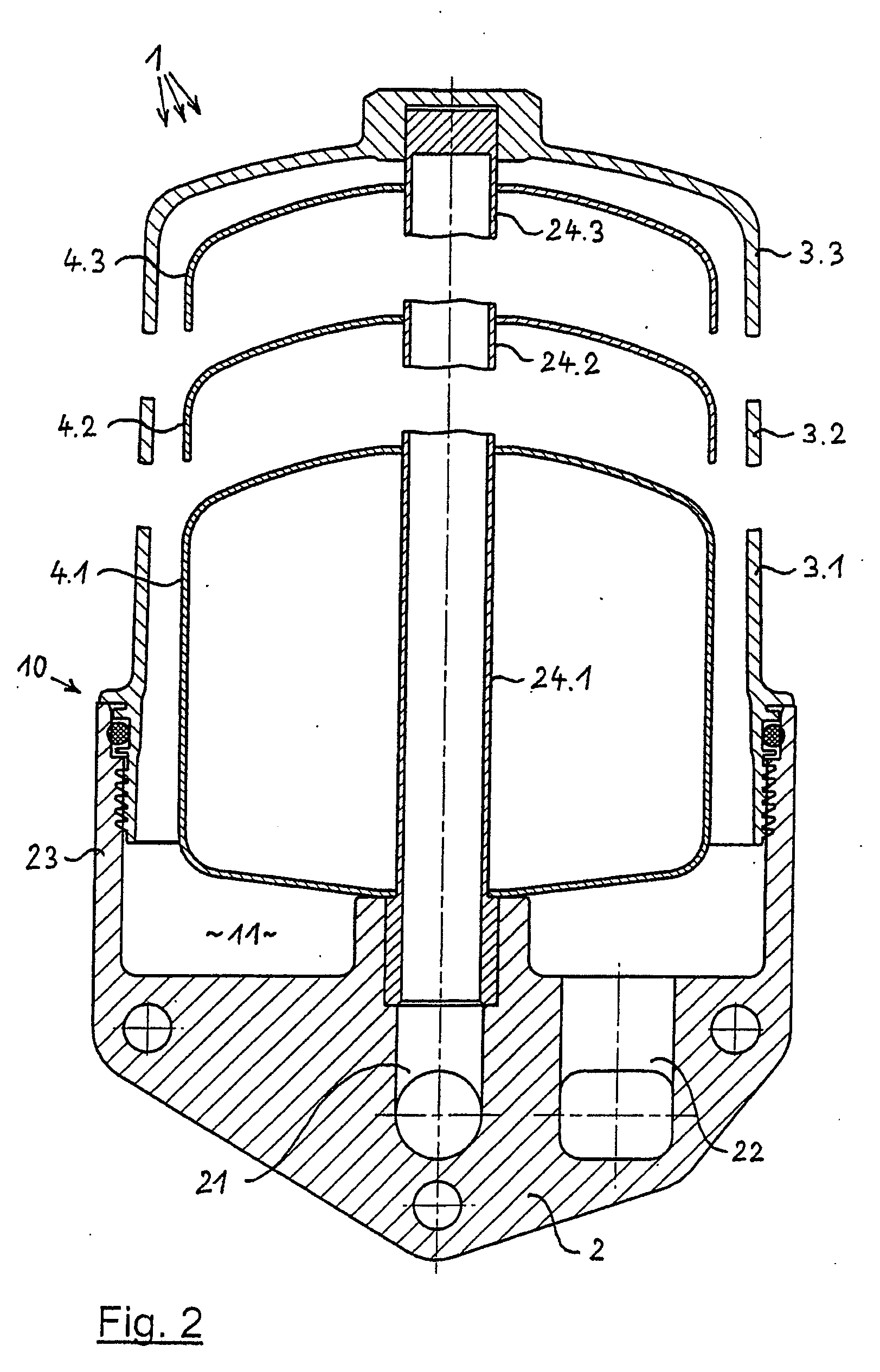Centrifuges, in particular, for a lubricant oil in an internal combustion engine
- Summary
- Abstract
- Description
- Claims
- Application Information
AI Technical Summary
Benefits of technology
Problems solved by technology
Method used
Image
Examples
Example
BRIEF DESCRIPTION OF THE DRAWINGS
[0031]FIG. 1 shows three different centrifuges 1 alongside one another, for which it is characteristic that they have identical bases 2 each of which forms a lower housing part. Each base 2 comprises a supply channel 21 for a fluid that is to be cleaned in centrifuge 1, for example the lubricant oil of an associated internal combustion engine, as well as a drainage channel for carrying off the cleaned liquid from centrifuge 1. In addition, each base 2 comprises a peripheral wall 23 that extends upward. In each of the three centrifuges 1 shown in FIG. 1, a lid 3.1, 3.2, 3.3 is connected to peripheral wall 23; here, the lids are removably screwed on, with intermediate situation of a sealing ring. Lids 3.1 to 3.3 each have at the bottom an identical connecting end for connection to peripheral wall 23, but have heights that are different from one another, as is shown in FIG. 1.
[0032]In interior space 11 of each housing 10 formed by base 2 and the associa...
PUM
 Login to View More
Login to View More Abstract
Description
Claims
Application Information
 Login to View More
Login to View More - R&D
- Intellectual Property
- Life Sciences
- Materials
- Tech Scout
- Unparalleled Data Quality
- Higher Quality Content
- 60% Fewer Hallucinations
Browse by: Latest US Patents, China's latest patents, Technical Efficacy Thesaurus, Application Domain, Technology Topic, Popular Technical Reports.
© 2025 PatSnap. All rights reserved.Legal|Privacy policy|Modern Slavery Act Transparency Statement|Sitemap|About US| Contact US: help@patsnap.com



